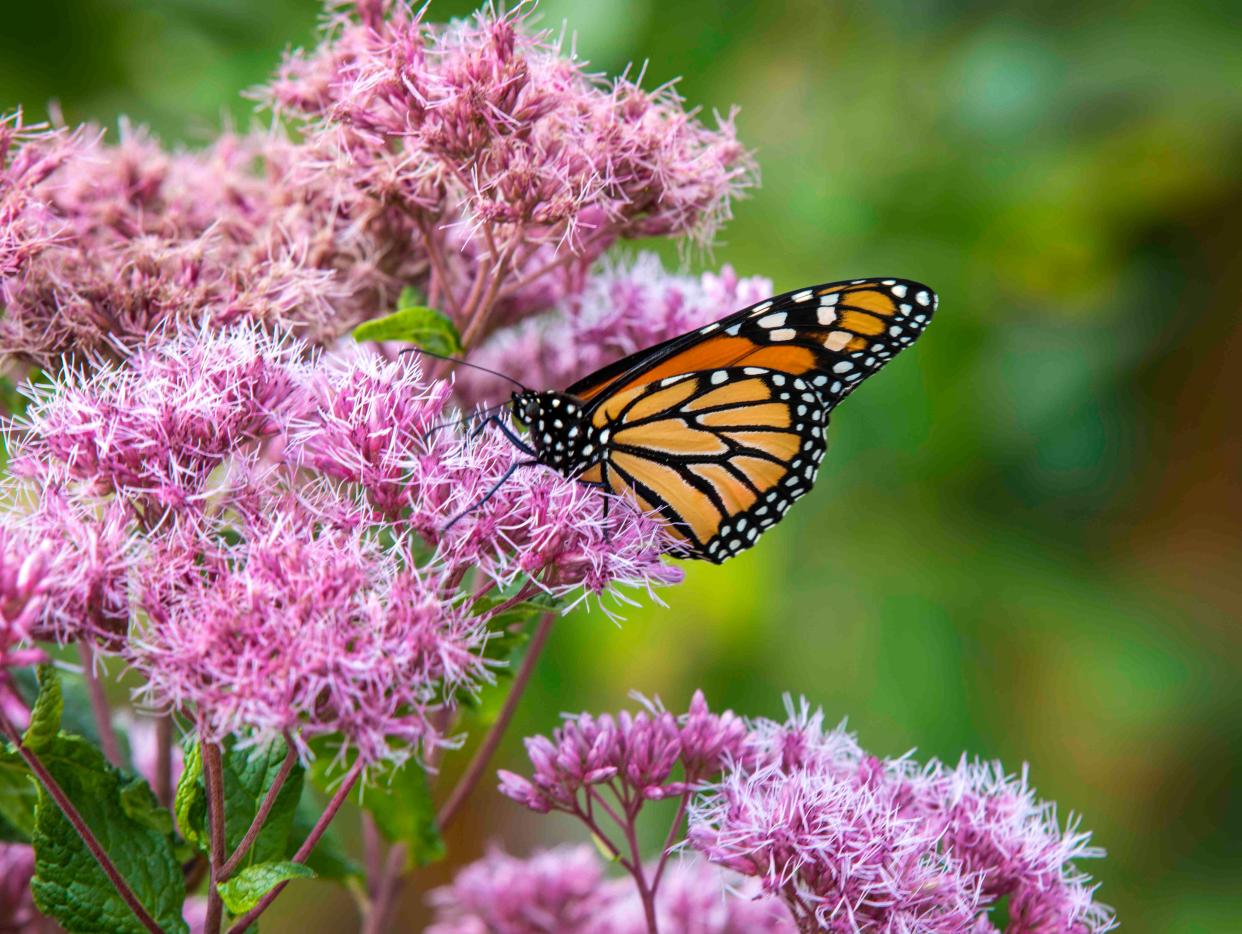Monarch butterflies in Ohio: When and where to see them as they migrate south

October is around the corner, and orange and black are the colors of the season: in the stands at Paycor Stadium, in the aisles at your local Spirit Halloween store and in the sky.
The air is getting cooler, which means thousands of monarch butterflies are once again hitting the road to go wait out the winter in Central Mexico, according to the Ohio Department of Natural Resources Division of Wildlife. However, the loss of prairie and grassland habits across the region means the numbers of these dazzling creatures are dwindling each year.
Here's what to know about monarch butterflies and their migration.
When do monarch butterflies travel south?
Beginning in mid-August, eastern monarch butterflies migrate from their breeding areas in U.S. and Canada on a journey several thousand miles south to Mexico, often covering 50-100 miles per day. As of mid-September, the multicolored butterflies can be spotted over Ohio before landing in Mexico near early November.
The first three weeks of September were the perfect time to admire the masses of monarchs, according to Cleveland Metroparks. But you should still be able to enjoy them throughout October.
Where can monarch butterflies be spotted in Ohio?
Every long road trip requires snacks. Native flowers in the Ohio region help fuel the migrating monarchs along their trek, according to ODNR. Cleveland Metroparks also says lakefront shorelines are peak routes for the pollinating insects, as they travel south across Lake Erie's open waters.
Here are Ohio forests, gardens and nature reserves perfect for spotting this year’s monarch migration.
Euclid Creek Reservation, Cleveland.
Gordon Park at Lakefront Reservation, Cleveland.
Roger's Meadow at North Chagrin Reservation, Gates Mills.
Tallgrass Prairie at Brecksville Reservation, Brecksville.
Wendy Park, Cleveland.
Ohioans have already taken to social media to share their dazzling discoveries at Wendy Park.
The Monarchs are migrating for the winter. I counted easily over 100 in Wendy Park, Cleveland Ohio. This is a favorite stopping point for them winter or spring. Got this shot this morning - 9/5/2023.#monarch #Butterflies #insects #migration pic.twitter.com/9ZQURgXW4I
— Spectacular Wings (@dave_creg) September 5, 2023
Are monarch butterflies endangered?
The United States has not officially declared the monarch butterfly an endangered species. However, the International Union for Conservation of Nature added the insect to its red list of threatened species, classifying them as endangered last year, per The Hill.
Recent reports cited by the World Wildlife Fund indicate the presence of monarch butterflies in their Mexico wintering sites dropped 22% in one year, from 7 acres to nearly 5.5. acres. The decrease follows a 25-year downward trend, with the insects once covering 45 acres of forest.
Deforestation and the use of herbicides in their U.S. breeding areas, as well as their wintering sites, are primary causes behind the species' decline.
To help remedy this trend, ODNR recommends conserving tracts of unmown grassland. Planting milkweed seeds, the monarchs’ sole host plant, can also be of huge benefit to the species.
Have you seen a monarch butterfly emerge from its chrysalis? Plant some milkweed next year and see for yourself!#monarch #butterfly #milkweed #pollinator #ohiofindithere
Video: https://t.co/Z7j0hDA6If pic.twitter.com/jsXrxFqzL7— OhioDNR (@ohiodnr) September 11, 2019
The Ohio Pollinator Habitat Initiative is coordinating pod collection for those with an abundance of milkweed through local Soil & Water Conservation District locations. Those interested can go to ohiopollinator.org to find a nearby drop-off site.
This article originally appeared on Cincinnati Enquirer: Are monarch butterflies endangered in 2023? When and where to see them

